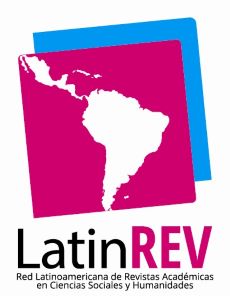Mediation at the notary's office in Mexico
The profile of the notary mediator.
DOI:
https://doi.org/10.29105/msc4.7-100Keywords:
Mediation, Conflict, Dispute resolutionAbstract
The main objective of this article was to analyze the way in which alternative justice is conceptualized and applied, specifically the figure of mediation within the registry and notarial system, that is, the profile of the notary public and his inclusion as a highly specialized mediator within the Mexican regulatory framework.
The type of research carried out is essentially qualitative, documentary-interpretative, using the inductive, dialectical functionalist, exegetical and legal interpretation methods.
with the result that the profile of the mediator is much broader than the profile of the notary public, being able to cover all areas of the social and humanistic sciences, including in some cases, the area of health, which is beneficial for the parties in conflict, by providing them with broad and complete visions in relation to their conflict.
In which it is concluded that not just any notary public should carry out mediation processes, since their purely legal training will limit them when carrying out mediation sessions, the highly specialized notary mediator should be instructed in the tools and skills of alternative justice, restorative, conflictology, irenology and mediation, visualized not only from the legal technical aspect, but from the vision of areas such as sociology, psychology and psycho-pedagogical areas, creating a "new language" and understanding of the conflict.
Downloads
References
Alvarado Contreras, S. (2019). EL NOTARIO PÚBLICO, LA NATURALEZADE SU FUNCIÓNY LOSALCANCES LEGALES DE SUS ACTUACIONES. Ecos Sociales, México.
Garciainda González, P. M. (2013). MAteriales para la práctica de la mediación. Esquema, cuetiones y formularios para el ejercicio de una profesión en alza. España: Aranzadi.
Gorjón Gómez, F. J. (2015). Métodos alternos de solución de conflictos y su protagonismo en el nuevo contexto legal mexicano, retos y perspectivas. En F. P. Arellano Hernández, Retos y perspectivas de los MASC en México (pág. 31). Monterrey, México: Tirant lo blanch.
Gorjón Gómez, F. J. (2016). Mediación. Ciencia social emergente. Poder Judicial del Estado de Nuevo León. . DOI: https://doi.org/10.5944/comunitania.12.1
Márquez Algara, M. G. (2004). Mediación y administración de justicia. Hacia la consolidación de una justicia participativa . Aguascalientes, México: Universidad Autónoma de Aguascalientes.
Maltez Navarro, V. (2018). LOS VALORES INTANGIBLES EN LOS MÉTODOS DE SOLUCIÓN DE CONFLICTOS EN NUEVO LEÓN, MÉXICO. Cuaderno jurídico y político, 4(12), 73-80. DOI: https://doi.org/10.5377/cuadernojurypol.v4i12.11121
Marquez Torres, S. G. (2022). LA MEDIACIÓN NOTARIAL EN EL ESTADO DE GUANAJUATO. Ciencia Jurídica, 2(22), 165-179. DOI: https://doi.org/10.15174/cj.v11i22.422
Milán Morale, N., Ordelin Font, J. L., & Vega Cardona, R. J. (2015). La intervención notarial en la mediación. Consideraciones de ‘lege ferenda’ en la prevención/ resolución de conflictos en el ordenamiento jurídico cubano. Revista de derecho privado(28), 403-433. DOI: https://doi.org/10.18601/01234366.n28.12
Munuera Gómez, P., & Costa e Silva, A. M. (2020). La mediación como disciplina científica: El espacio profesional y académico. Mediaciones Sociales, 19. DOI: https://doi.org/10.5209/meso.70817
Nava Gonzalez, W., & Becerra Pérez, J. A. (2017). MECANISMOS ALTERNATIVOS DE RESOLUCIÓN DE CONFLICTOS: UN ACCESO A LA JUSTICIA CONSAGRADO COMO DERECHO HUMANO EN LA CONSTITUCIÓN MEXICANA. Cuestiones costitucionales. Revista Mexicana de Derecho Constitucional(37). DOI: https://doi.org/10.22201/iij.24484881e.2017.37.11457
Palacios Xochipa, J. (2020). La epistemología de la mediación y su impacto en la profesionalización de los MASC en la cultura de paz. Eirene. Estudios de paz y conflictos.
Pacheco Pulido, G. (2012). Mediación. Cultura de la paz. MEdio alternativo de administración de justicia. México: Porrúa.
Pastrana Aguirre, L. A. (2009). La mediación en el sistema procesal acusatorio en México. Doctrina y disposiciones legales. México: Flores.
Rodríguez de la Cerda, J. G. (2023). LA MEDIACIÓN NOTARIAL Y SU APORTACIÓN A LA CULTURA DE PAZ. Perfiles de las ciencias sociales , 91-106. DOI: https://doi.org/10.34096/ics.i49.13086
Wilenmann, J. (2011). La Administración de justicia como un bien jurídico. Revista de derecho (Valparaíso)(36), 531-573. DOI: https://doi.org/10.4067/S0718-68512011000100015
Zaera Navarrete, J. I. (2013). Guía practica de mediación. 100 preguntas y respuestas para abogados. Valencia : Tirant lo blanch.
Downloads
Published
How to Cite
Issue
Section
License
Copyright (c) 2024 Sergio Arnoldo Morán Navarro, José Antonio Serrano Morán

This work is licensed under a Creative Commons Attribution-NonCommercial 4.0 International License.
Los autores/as que publiquen en esta revista aceptan las siguientes condiciones:
a. Los autores/as conservarán sus derechos de autor y garantizarán a la revista el derecho de primera publicación de su obra, el cual estará simultáneamente sujeto a la Licencia Creative Commons Atribución-NoComercial 4.0 Internacional. que permite a terceros compartir la obra siempre que se indique su autor y su primera publicación esta revista.
b. Los autores/as pueden realizar otros acuerdos contractuales independientes y adicionales para la distribución no exclusiva de la versión del artículo publicado en esta revista (p. ej., incluirlo en un repositorio institucional o publicarlo en un libro) siempre que indiquen claramente que el trabajo se publicó por primera vez en MSC Métodos de Solución de Conflictos.
c. Se permite y recomienda a los autores/as a publicar su trabajo en Internet (por ejemplo en páginas institucionales o personales) posterior al proceso de revisión y publicación, ya que puede conducir a intercambios productivos y a una mayor y más rápida difusión del trabajo publicado (Véase El efecto del acceso abierto).







 MSC Métodos de Solución de Conflictos Vol. 5 Núm. 9, Julio-Diciembre 2025, es una publicación semestral editada por la Universidad Autónoma de Nuevo León, a través de la Facultad de Derecho y Criminología. Dirección de la publicación: Av. Universidad s/n Cd. Universitaria C.P. 66455, San Nicolás de los Garza, Nuevo León, México. revistamsc.uanl.mx, revistamsc@uanl.mx. Editor responsable: Dr. Francisco Javier Gorjón Gómez. Reserva de Derechos al Uso Exclusivo núm. 04-2023-110310161600-102 ISSN 2992-8370, ambos otorgados por el Instituto Nacional del Derecho de Autor. Responsable de la última actualización: Dr. Paris Alejandro Cabello Tijerina, Facultad de Derecho y Criminología Av. Universidad s/n Cd. Universitaria C.P. 66451, San Nicolás de los Garza, Nuevo León, México. Fecha de la última modificación: 28 de julio de 2025.
MSC Métodos de Solución de Conflictos Vol. 5 Núm. 9, Julio-Diciembre 2025, es una publicación semestral editada por la Universidad Autónoma de Nuevo León, a través de la Facultad de Derecho y Criminología. Dirección de la publicación: Av. Universidad s/n Cd. Universitaria C.P. 66455, San Nicolás de los Garza, Nuevo León, México. revistamsc.uanl.mx, revistamsc@uanl.mx. Editor responsable: Dr. Francisco Javier Gorjón Gómez. Reserva de Derechos al Uso Exclusivo núm. 04-2023-110310161600-102 ISSN 2992-8370, ambos otorgados por el Instituto Nacional del Derecho de Autor. Responsable de la última actualización: Dr. Paris Alejandro Cabello Tijerina, Facultad de Derecho y Criminología Av. Universidad s/n Cd. Universitaria C.P. 66451, San Nicolás de los Garza, Nuevo León, México. Fecha de la última modificación: 28 de julio de 2025.